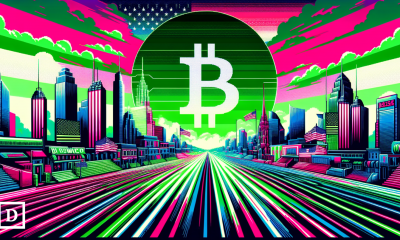

De-fi
Ripple CTO Admits ‘Even Ripple Can’t Use XRPL DEX’ as XRP Faces Longtime Fan’s Scrutiny – Crypto News
YouTuber Andrei Jikh questioned why Ripple’s banking partnerships are yet to translate into meaningful on-chain activity.
Ripple’s lack of adoption came under scrutiny on July 30 as its long-time supporter Andrei Jikh, a finance-focused YouTuber with over 2.6 million subscribers, questioned why Ripple’s extensive banking partnerships haven’t yet translated into any meaningful on-chain activity.
“I know people are VERY opinionated about this, but I’ve been following XRP since 2014 and I still have not found the answers to these questions […] Ripple has 300+ bank partnerships, but after 13 years, shouldn’t there be billions in daily on-chain volume?” Jikh wrote in an X post.
He also challenged the logic of transacting in XRP, given its price volatility compared with stablecoins, and questioned why users would actually hold XRP if it mainly acts as a “bridge currency.”
Additionally, Jikh wasn’t buying the argument that bridge currencies will remain necessary once stablecoins cover more currency pairs, and wondered why financial giants like BlackRock would pick the XRP Ledger for tokenization instead of building their own blockchains, like Robinhood, which recently announced plans to leverage Arbitrum, an Ethereum Layer 2 solution.
‘Volatility Isn’t a Minus’
It didn’t take long for Ripple’s Chief Technology Officer, David “JoelKatz” Schwartz, to join the conversation and offer lengthy responses intended to defend Ripple, though some doubts still remained.
On the slow growth of on-chain volume, Schwartz noted that institutions have “historically preferred to use digital assets off-chain rather than onchain.” He acknowledged adoption “has been very slow” but attributed it partly to compliance, pointing out that “Even Ripple can’t use the XRPL DEX for payments yet because we can’t be sure a terrorist won’t provide the liquidity for payment.”
“[…] generally decentralized exchanges on public layer 1’s don’t give you any control or knowledge of who your counterparties are. Logically, I don’t think it should matter, but regulations aren’t always totally logical,” Schwartz explained in another X post.
Regarding XRP’s volatility, Schwartz argued that there may be “use cases where volatility isn’t a minus, or is even a plus,” adding that some investors believe “the upside [is] worth more than the downside,” implying that transacting in XRP is not necessarily a disadvantage.
On incentives to hold XRP as a bridge currency, Schwartz explained that “A bridge currency only works if someone is holding it so that you can get it precisely when you need it,” noting that it might be cheaper to hold the dominant bridge currency when the next needed asset is uncertain.
‘Obviously Silly’
Looking ahead to the future of bridge currencies, the Ripple CTO said that if one stablecoin were to dominate, it could become the sole bridge currency. However, he argued that because stablecoins are tied to specific fiat currencies and jurisdictions, a multi-stablecoin environment will likely persist, keeping bridge assets relevant for tokenized securities and loan portfolios.
When asked why firms might choose to develop private blockchains rather than rely on existing ones, Schwartz emphasized that interoperability and asset portability across multiple chains may matter more than exclusivity, citing Circle’s decision to issue its USDC stablecoin across various blockchains rather than launching its own as an example.
“You can see why that’s obviously silly. I think the same kind of logic will apply to tokenized real world assets over the next year or two,” he said.
XRP hit an all-time high of $3.65 on July 18 and currently changes hands for $3.16 with a fully diluted valuation (FDV) of $316 billion, making it the third-largest cryptocurrency after BTC and ETH, per data from CoinGecko.
-
others1 week ago
Japan Foreign Investment in Japan Stocks up to ¥528.3B in December 12 from previous ¥96.8B – Crypto News
-

 Technology1 week ago
Technology1 week agoOnePlus 15R vs Pixel 9a: Which phone is the best buy under ₹50,000? Display, camera, processor and more compared – Crypto News
-

 Blockchain7 days ago
Blockchain7 days agoThis Week in Stablecoins: Winning the Back Office – Crypto News
-

 Technology6 days ago
Technology6 days agoApple iPhone 16 price drops to ₹40,990 in Croma’s Cromtastic December Sale: How the deal works – Crypto News
-

 Technology6 days ago
Technology6 days agoApple iPhone 16 price drops to ₹40,990 in Croma’s Cromtastic December Sale: How the deal works – Crypto News
-
Business6 days ago
XRP Holders Eye ‘Institutional Grade Yield’ as Ripple Engineer Details Upcoming XRPL Lending Protocol – Crypto News
-
Business7 days ago
DOGEBALL Presale: A Boost to Bring P2E Games Back into the Spotlight – Crypto News
-

 Technology6 days ago
Technology6 days agoApple iPhone 16 price drops to ₹40,990 in Croma’s Cromtastic December Sale: How the deal works – Crypto News
-

 others1 week ago
others1 week agoAustralian Dollar loses as US Dollar advances before Michigan Sentiment Index – Crypto News
-
others6 days ago
XRP Holders Eye ‘Institutional Grade Yield’ as Ripple Engineer Details Upcoming XRPL Lending Protocol – Crypto News
-

 Blockchain6 days ago
Blockchain6 days agoLitecoin Follows Bitcoin’s Momentum, But Resistance Looms At $79.60 – Crypto News
-

 Technology6 days ago
Technology6 days agoApple iPhone 15 price drops to ₹36,490 in Croma Cromtastic December Sale: How the deal works – Crypto News
-
Business7 days ago
125 Crypto Firms Mount Unified Defense as Banks Push to Block Stablecoin Rewards – Crypto News
-

 Blockchain1 week ago
Blockchain1 week agoBlockchain’s Institutional Future Is Private and Permissioned – Crypto News
-
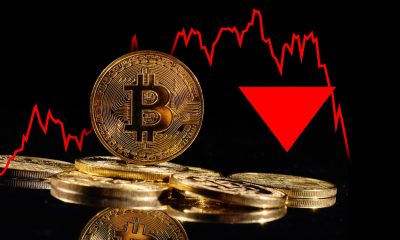
 Blockchain1 week ago
Blockchain1 week agoBitcoin on Track For 4th Annual Decline Despite Crypto Adoption – Crypto News
-
Business6 days ago
Ethereum Faces Selling Pressure as BitMEX Co-Founder Rotates $2M Into DeFi Tokens – Crypto News
-
Technology6 days ago
Michael Saylor Sparks Debate Over Bitcoin’s Quantum Risk as Bitcoiners Dismiss It as ‘FUD’ – Crypto News
-

 Blockchain6 days ago
Blockchain6 days agoCrypto Market Sentiment Not Fearful Enough For Bottom: Santiment – Crypto News
-

 Blockchain6 days ago
Blockchain6 days agoCrypto Market Sentiment Not Fearful Enough For Bottom: Santiment – Crypto News
-

 Blockchain6 days ago
Blockchain6 days agoLitecoin Follows Bitcoin’s Momentum, But Resistance Looms At $79.60 – Crypto News
-
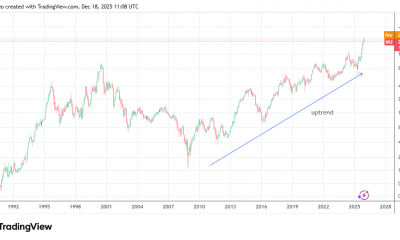
 Cryptocurrency5 days ago
Cryptocurrency5 days agoKey Drivers & Technical Outlook – Crypto News
-

 Technology5 days ago
Technology5 days agoSamsung Galaxy S25 Ultra price drops to ₹69,999 at Croma Cromtastic December Sale? Here’s how the deal works – Crypto News
-

 others1 week ago
others1 week agoJapanese Yen strengthens as BoJ rate hike speculation grows – Crypto News
-
Metaverse1 week ago
How companies are using AI to squeeze more from your wallet – Crypto News
-

 Cryptocurrency1 week ago
Cryptocurrency1 week agoWhy quantum computing is becoming a real concern for Bitcoin – Crypto News
-
Business1 week ago
Breaking: VanEck Discloses Fees and Staking Details for its Avalanche ETF – Crypto News
-
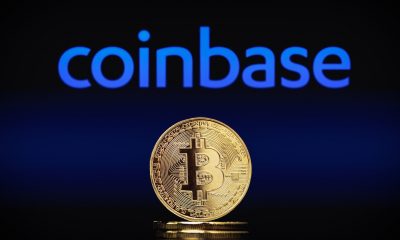
 Blockchain1 week ago
Blockchain1 week agoCoinbase Launches Service to Help Businesses Create Tokens – Crypto News
-

 Cryptocurrency7 days ago
Cryptocurrency7 days agoBTC at $143K, ETH above $4000: Citi issues bullish price forecasts as crypto market continues to struggle – Crypto News
-
Business7 days ago
Bitcoin Price Alarming Pattern Points to a Dip to $80k as $2.7b Options Expires Today – Crypto News
-
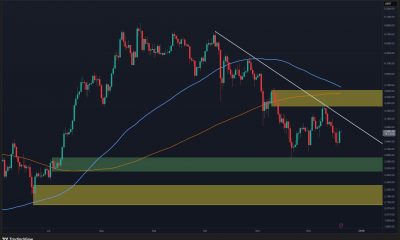
 Cryptocurrency6 days ago
Cryptocurrency6 days agoIs ETH Ready for Sustained Recovery or Another Rejection Looms? – Crypto News
-
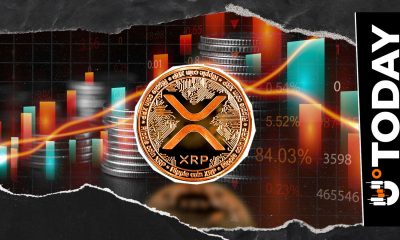
 Cryptocurrency6 days ago
Cryptocurrency6 days agoXRP Could Add Zero If Rally Is Short-Lived – Crypto News
-

 Technology5 days ago
Technology5 days agoSam Altman teases ChatGPT Christmas Easter egg that turns your selfie into a Santa message: How it works – Crypto News
-
Technology5 days ago
Canary Capital Announces Major Changes to Its SUI ETF – Crypto News
-
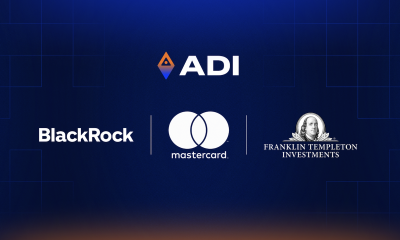
 Blockchain1 week ago
Blockchain1 week agoMastercard, BlackRock Join Middle East-Focused Blockchain Effort – Crypto News
-

 Technology1 week ago
Technology1 week agoFrom chibi to plushie: 7 Must-try AI portraits you can create with GPT Image 1.5 – Crypto News
-

 Technology1 week ago
Technology1 week agoFrom chibi to plushie: 7 Must-try AI portraits you can create with GPT Image 1.5 – Crypto News
-

 Metaverse7 days ago
Metaverse7 days agoAI Tool of the Week: Transform marketing concepts instantly. – Crypto News
-
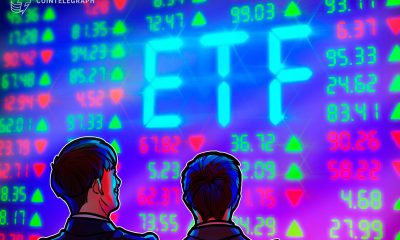
 Blockchain6 days ago
Blockchain6 days agoBlackRock’s IBIT Ranks 6th in ETF Flows Despite Negative Returns – Crypto News
-

 others6 days ago
others6 days agoElliott Wave, seasonality, and cycles indicate more upside – Crypto News
-

 others6 days ago
others6 days agoElliott Wave, seasonality, and cycles indicate more upside – Crypto News
-

 Cryptocurrency6 days ago
Cryptocurrency6 days agoCrypto Industry Must Make Progress Before Trump Leaves Office: Etherealize Co-Founder – Crypto News
-

 Cryptocurrency6 days ago
Cryptocurrency6 days agoCrypto Industry Must Make Progress Before Trump Leaves Office: Etherealize Co-Founder – Crypto News
-

 Blockchain6 days ago
Blockchain6 days agoBlockchain and AI Vibe-Coding To Dethrone Amazon Web Servies: Crypto exec – Crypto News
-

 Blockchain6 days ago
Blockchain6 days agoBanks Need XRP To Be Pricier—Here’s Why A Finance Expert Says So – Crypto News
-

 Cryptocurrency6 days ago
Cryptocurrency6 days agoBitcoin Breaks a 10-Year Correlation With Stocks What Past Cycles Signal for 2026 – Crypto News
-

 Blockchain5 days ago
Blockchain5 days agoAnalyst Explains Bitcoin Price Path To $70K: Why This Level Might Be Inevitable – Crypto News
-

 Technology5 days ago
Technology5 days agoSam Altman says AI’s next big breakthrough will be memory, not reasoning – Crypto News
-

 Cryptocurrency5 days ago
Cryptocurrency5 days agoCrypto Game Crashouts: The Biggest Shutdowns in 2025 – Crypto News
-

 others5 days ago
others5 days agoBillionaire Ray Dalio Says Bitcoin Has Problems, Calls Crypto Asset Inferior to Gold – Crypto News
-
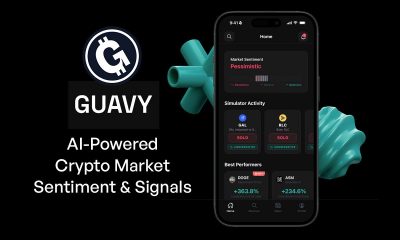
 others4 days ago
others4 days agoGuavy Launches Mobile App: AI-Powered Crypto Market Sentiment and Trading Signals – Crypto News









